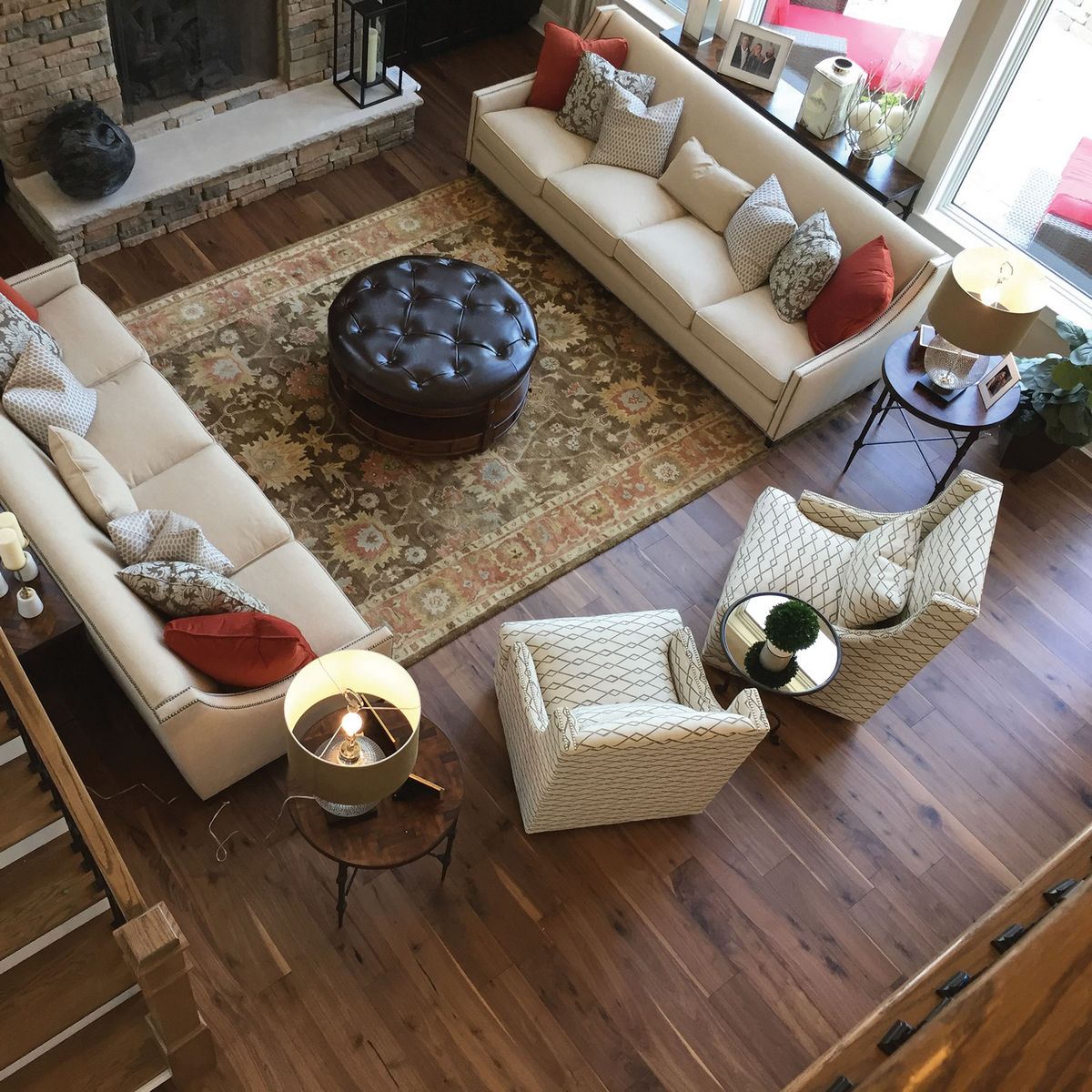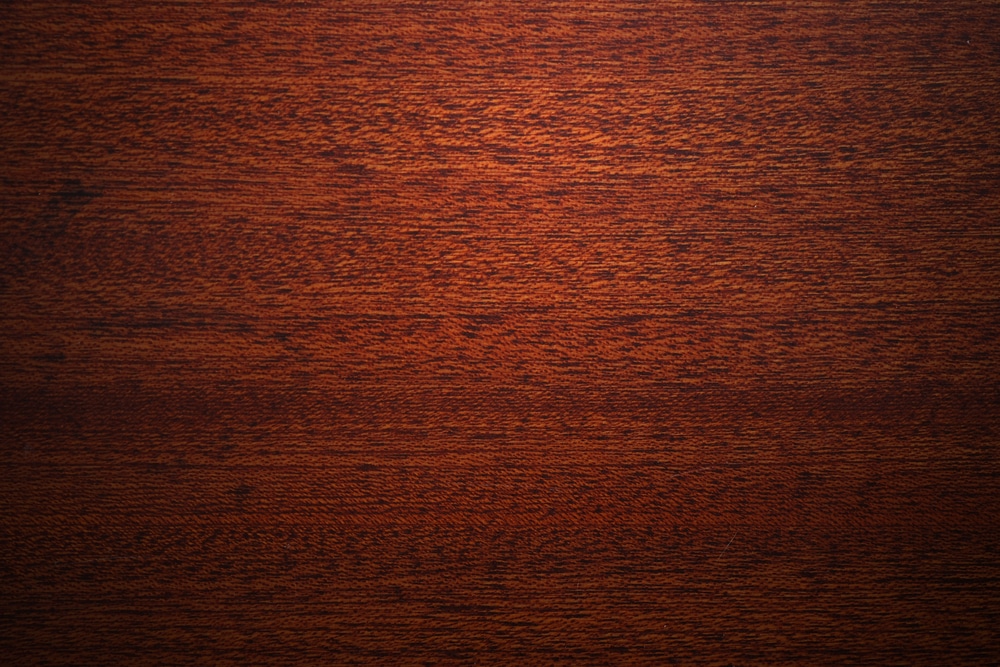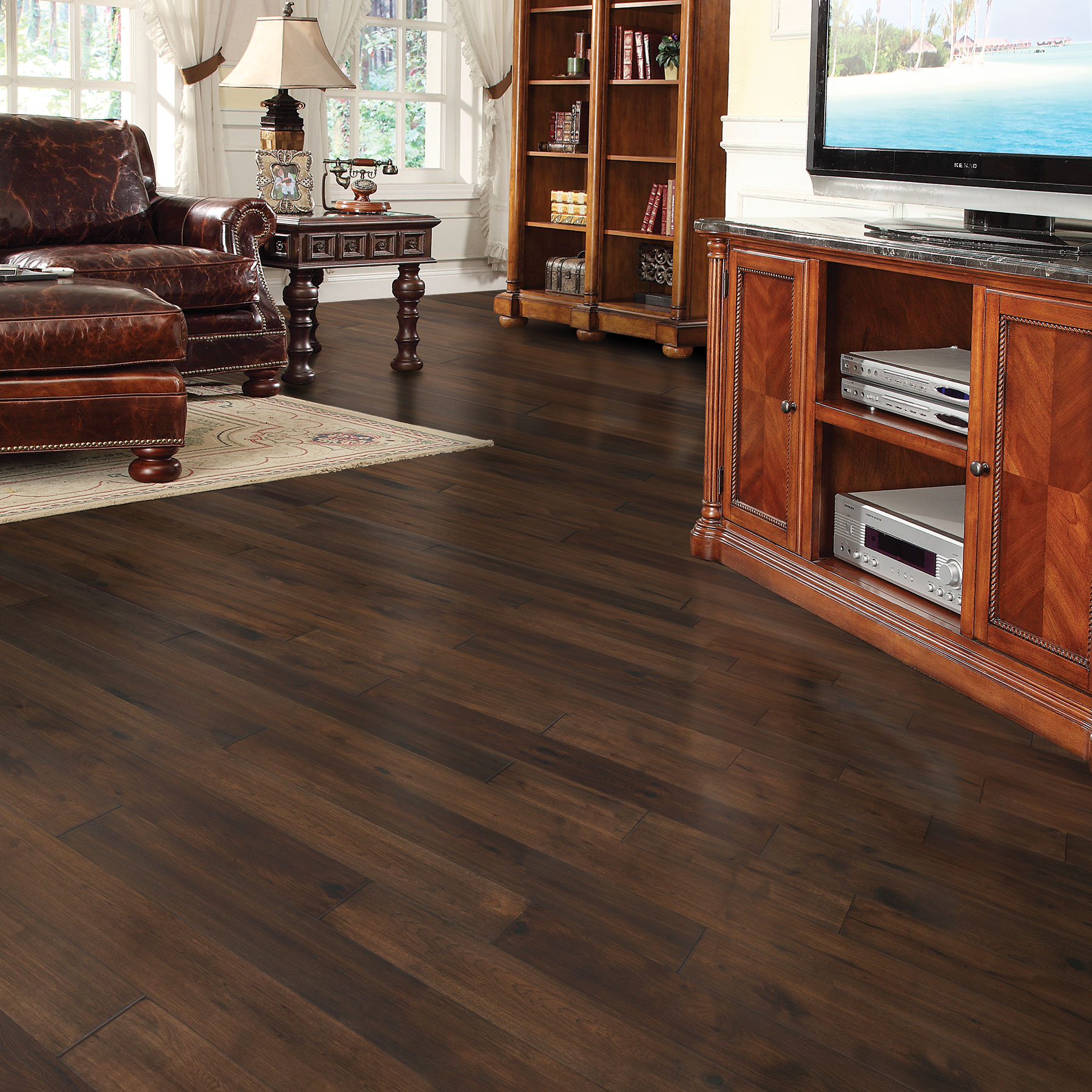No products in the cart.
Hardwood Flooring
Basic wooden floors have been around since the early 1600s. They began to get a more finished, elegant look in the Baroque era later in the 1600s and into the 1700s. Here we are hundreds of years later and they remain a sought-after choice for homes, office spaces, retail stores, and restaurants. They certainly offer a timeless, high-quality look and feel. Most flooring shoppers who are looking for natural hardwood options find choices in two types of boards, solid or engineered wood. They are both crafted from 100% wood in different ways.
STEP 1 - Find
Find Your Favorite & Order a Flooring Sample
STEP 2 - Questions
Talk with a Flooring Specialist & Answer Any Questions
STEP 3: Order
Order the Floor & Trim. Have it Shipped To Your Home
It seems we can't find what you're looking for.
Hardwood Flooring

Basic wooden floors have been around since the early 1600s. They began to get a more finished, elegant look in the Baroque era later in the 1600s and into the 1700s. Here we are hundreds of years later and they remain a sought-after choice for homes, office spaces, retail stores, and restaurants. They certainly offer a timeless, high-quality look and feel.
Most flooring shoppers who are looking for natural hardwood options find choices in two types of boards, solid or engineered wood. They are both crafted from 100% wood in different ways.
Solid Wood
Hardwood cut from single, solid sections of tree wood are sanded and refinished, and available usually in a width of ¾-inch. This type of board is installed via permanent adhesive to the subfloor, which is likely plywood in most situations. Using solid hardwood is appealing to many interior designers because of the rich look; however, users must keep in mind that as a natural product it will do best in very stable climates because it will contract and expand in relation to temperature and air moisture. It’s recommended, for this reason, that it not be placed in kitchens, bathrooms, or basements. When installing solid wood planks, a gap should be left between the flooring and the wall to allow for size changes.
Engineered Wood
 As the name implies, flooring pieces that have been engineered are not solid planks cut from trees but are made up of many sections that are adhered together with a specific look in mind. An engineered board bonds together layers made up of inexpensive plywood on the undersides and a top layer of attractive hardwood. The bonding material is also meant to control the shrinkage and expansion qualities of the product. In fact, engineered flooring is less likely to expand or contact at all, making it a more appealing choice for certain rooms. In addition, it is far less expensive because of the use of low-cost plywood in its creation, and a lower volume of expensive hardwood.
As the name implies, flooring pieces that have been engineered are not solid planks cut from trees but are made up of many sections that are adhered together with a specific look in mind. An engineered board bonds together layers made up of inexpensive plywood on the undersides and a top layer of attractive hardwood. The bonding material is also meant to control the shrinkage and expansion qualities of the product. In fact, engineered flooring is less likely to expand or contact at all, making it a more appealing choice for certain rooms. In addition, it is far less expensive because of the use of low-cost plywood in its creation, and a lower volume of expensive hardwood.
While some swear by the top-level looks of solid hardwood flooring, others claim the practicality, flexibility, functionality, and cost savings of engineered wood flooring outweigh the drawbacks. It is an individual preference, for certain. It helps to make a list of pros and cons, and take time to research and review the actual product in several settings before making a long-term decision.
Both solid and engineered flooring is available in a large choice of wood species, styles, colors, and levels of durability. Here are several popular choices for homes and businesses:

Oak

Maple

Cherry

Walnut

Ash

Teak

Mahogany

Hickory

Choosing A Floor
Of course, much of your decision on which type to use should be based on what appeals to you and your family aesthetically; however, also consider some other practical thoughts when making that final choice. Think about the level of durability you’ll need and how much activity that space will see. Wood is not infallible, so will be subject to scratches, nicks, and scuffs in some scenarios.
Even the strongest of the hardwood species may see some damage from things like scraping furniture, pet claws, rowdy kids, and sharp shoe heels. High-traffic homes need a durable floor, for sure. Take a look at the wood species’ hardwood hardness rating from the manufacturer’s specifications. Typically, Oak, Hickory, and Maple have some of the highest hardness ratings.
Take a careful look, too at the protective finish specifications. Each wooden flooring product is coated with a top coat with varying levels of protection. It can impact how well a floor withstands scratches, dents, and more. Look for a product with a lifetime warranty on this finish for the best results. As a general rule, matte-finishes and planks with textures are a wise choice because these coatings hide wear-and-tear marks better than the smoother, glossier finishes.
Review the manufacturer’s  mention of water-resistance measures. Some hardwood flooring, especially the engineered products, have special additions to help avoid damage from moisture exposure and spills.
mention of water-resistance measures. Some hardwood flooring, especially the engineered products, have special additions to help avoid damage from moisture exposure and spills.
In regard to pets, one helpful measure to avoid claw scratches on wood floors is to regularly trim those dog and cat nails so they are less likely to damage the wood or wear coats. Other pet concerns include bathroom accidents and fur build-up in corners. Wipe up accidents promptly and plan on spending some extra effort dust-mopping corners and edges where the shed fur tends to build up in homes with pets.
When you’ve found a few styles that resonate with your needs and preferences, it’s a good idea to take some flooring samples home to place them where you plan on installing the new product. You can see how the lighting in the room hits it, and get an overall feel for how that color, grain pattern, and style will look. Flooring sellers online or in-store should be glad to present you with substantial samples to take home and review at your leisure.
Review these aspects of the sample at different times of day and night to get a comprehensive review:
- Wood type—Each species has
 a unique quality. Some have a more detailed or tighter grain, some offer subtle lines while others have a bold variation pattern. They are all fascinating and different. The natural personality comes out, whether it is gentle Maple or brash exotic Teak, so go with what feels right. Some Oaks and other woods have a lot of quirky knots and splits, which some users adore while others avoid. It’s a personal choice, for certain. And it helps to know whether the room will be formal or casual, as well.
a unique quality. Some have a more detailed or tighter grain, some offer subtle lines while others have a bold variation pattern. They are all fascinating and different. The natural personality comes out, whether it is gentle Maple or brash exotic Teak, so go with what feels right. Some Oaks and other woods have a lot of quirky knots and splits, which some users adore while others avoid. It’s a personal choice, for certain. And it helps to know whether the room will be formal or casual, as well. - Board sizing—In terms of plank width, there are many choices from narrow option less than 3-inches to wider looks beyond 5-inches. Thin widths are known to help a tiny space appear larger, whereas the extra-wide looks can give a more modern & open feel. Some designers are mixing things up a bit in recent years, interspersing various width sizes within the same space. It’s an interesting concept and unique design.
- Color and texture—It’s the combination effect that really matters. Take a close look at both the hue and the surface treatment together. The natural tone of the wood and its accompanying stain is complemented by the addition of a specific finish. Sometimes it includes a texture or even a weathered ‘reclaimed wood’ look to it. Some finishes are high-gloss and sophisticated. The color and tone underneath reacts in different ways, and offers varying shades depending on time of day or night. See which looks appeal to you most and also which will likely hold up best for the amount of activity in the room.
Hardwood Floor Maintenance
Even those unfamiliar with  hardwood floors know that this type of foundation does require special care, with the use of specific cleansers and cleaning tools a key factor in keeping the surface in optimal condition.
hardwood floors know that this type of foundation does require special care, with the use of specific cleansers and cleaning tools a key factor in keeping the surface in optimal condition.
Daily care for busy spaces should include a sweep or vacuum of the floor, as well as dust-mop along the edges, in corners, and underneath furniture. If you see a splatter or scuff mark, you can use a damp cloth to spot-clean.
Wet-mopping a hardwood floor should be done sparingly, and only using a lightly moistened mop head rather than one soaked or sloshing. High-traffic areas may need this once a month, while other spots may only need it once or twice a year. Here is the careful process:
- After dusting or sweeping all loose dirt away, prepare a bucket using 4 cups of warm water and just a few drops of mild wood soap or castile soap. Gently mix together.
- Gently soak and twist the spin mop or sponge-head to ensure it is dampened only (not dripping). Mop the floor in long strokes.
- AVOID letting water sit for long in any area, and wring the mop well between wipes.
- Open windows if possible or let a box fan assist to help the floor dry as quickly as possible.
- Enjoy your freshenened-up wood surface.
 manufacturers insist on water-only wiping or the warranty will be voided. Use a product recommended by the floor finisher, if applicable. Avoid using oils, furniture sprays, and waxes, as they tend to leave an unwelcome residue and may even damage the wood. Other cleaning agents that can damage wood include abrasive cleansers, ammonia, vinegar, and lemon juice. The top seal and the wood can sustain damage, so avoid mixtures or solutions with these ingredients.
manufacturers insist on water-only wiping or the warranty will be voided. Use a product recommended by the floor finisher, if applicable. Avoid using oils, furniture sprays, and waxes, as they tend to leave an unwelcome residue and may even damage the wood. Other cleaning agents that can damage wood include abrasive cleansers, ammonia, vinegar, and lemon juice. The top seal and the wood can sustain damage, so avoid mixtures or solutions with these ingredients.
Overall Considerations
It is a certainty for some home and business owners that they will select wood flooring because their hearts are set on it. Many feel strongly about personalized design components, and this is one area that affects. Some overall pros of hardwood flooring include its elegance, acoustic qualities, sanding/refinishing options over the years, and timeless appeal. Some overall cons include its sensitivity to damage from moisture or scratching, high cost, proneness to termite disturbances, and specific maintenance challenges. Consider each of these and more before making an ultimate decision.
Whichever flooring preference you select, enjoy that new floor and use common sense keeping it looking great for years to come. Good luck!
Buying
When browsing vinyl floor materials, you’ll notice the various forms include vinyl sheet, composition tile, luxury vinyl tile, and luxury vinyl plank. All are excellent options for a number of settings, with some fitting in more keenly in certain rooms than others. Consider and research the benefits of each to determine which material suits your environment best, then move on to the fun part of selecting a design.
